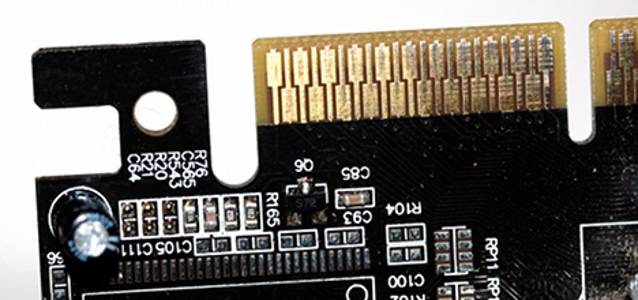
© sergey pesterev / dreamstime.com
Components |
2HMar. contract price increases by 2.7%
2HMar. contract price increases by 2.7% mainly due to Elpida uncertainty.
According to DRAMeXchange, DRAM contract price continued to show an uptrend in 2HMar. Average 4GB DDR3 module price increased by 2.7%, arriving at US$19, while average 2GB price hit the US$10 benchmark, a 2.6% increase.
From the market perspective, even though the DRAM market is currently in a state of oversupply, PC OEMs have gradually increased stock levels as a precaution against Elpida’s potential withdrawal from the market, while DRAM makers have taken a firm stance on price in hopes of maintaining the uptrend, which has resulted in the 2HMar. contract price increase.
As for the spot market, in contrast to continually rising contract price, from the day Elpida filed for bankruptcy protection to the present, DDR3 2Gb 1333Mhz ASP has fluctuated around US$1 due to sluggish demand, relatively weak buying momentum, and generally low trade volume.
This is a result of the fact that Elpida’s supply to the spot market has not decreased significantly, as well as the gradual decline of the spot market, which in past years easily had 20-30% market share, but accounts for only 13% of the DRAM market today. TrendForce indicates it is highly likely contract price will continue to rise in April, although it will still depend on third-place revenue holder Elpida’s next move. All of the above factors will influence the future DRAM price trend.
Facing a post-Elpida era, it is optimal timing for DRAM industry mergers and acquisitions. TrendForce indicates, Korean manufacturers’ combined market share has reached nearly 70% of the global DRAM industry, leaving only 30% for Taiwanese, U.S., and Japanese DRAM makers. The non-Korean makers are unable to compete in terms of economies of scale, technology migration speed, and product mix – their losses will only increase.
Taiwan-U.S.-Japan DRAM alliance critical to securing post-Elpida market share
In light of this, since mid-2011 Taiwanese DRAM makers have been continually decreasing commodity DRAM capacity – currently ProMOS is only manufacturing 10K of non-commodity DRAM products and Powerchip has become a dedicated foundry. For Japanese maker Elpida, who dropped a bomb at the end of February with its bankruptcy protection filing at the Tokyo District Court, it is looking like a merger or acquisition is unavoidable.
Looking at DRAM industry competition, TrendForce believes a Taiwan-U.S.-Japan alliance is the only way the makers would be able to go up against the Korean manufacturers. If Taiwanese makers are able to maintain timely mass production and economies of scale for wafer starts, in addition to good yield rates and technology migration support, they could bear the heavy burden of reducing cost.
As for U.S. makers, not only are they on good terms with PC OEMs, their server DRAM market share is satisfactory, and they could combine their flash products with mobile DRAM to make headway on the smartphone and tablet PC markets. Japanese makers are not far behind their Korean counterparts in terms of commodity and mobile DRAM yield rate and technology migration.
If they move more production to Taiwanese manufacturers and cooperate with U.S. makers on MCP production to target the mobile device market, cost management and profitability will improve. If the tri-national alliance is successful, their total capacity would be around 410K, 34% of global DRAM capacity, and the DRAM industry would be comprised of three equally strong contenders.






